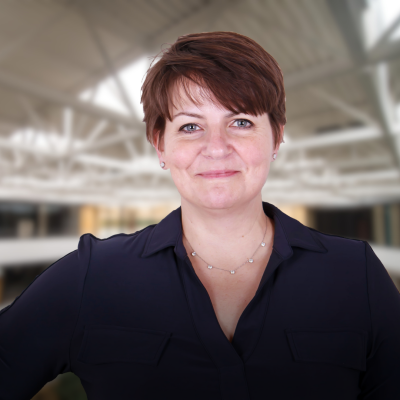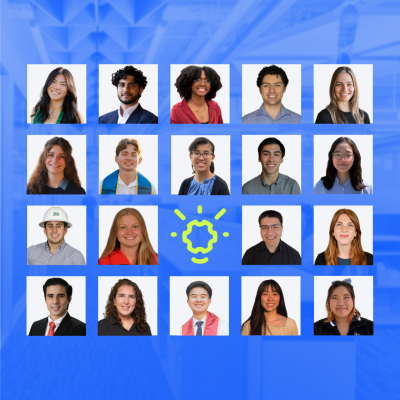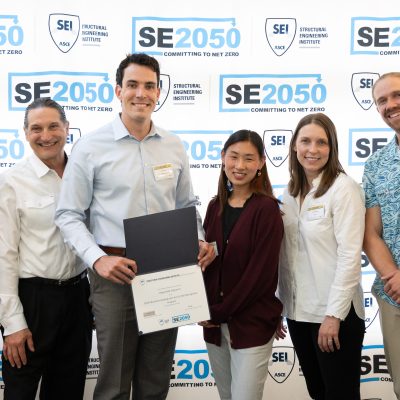Originally published in STRUCTURE Magazine in January 2021. Read the editorial on STRUCTURE Magazine’s site here.
Stacy Bartoletti, S.E., Chair CASE Executive Committee
Diversity, Equity, and Inclusion (DEI) have gained substantial exposure in 2020. Unfortunately, it has taken recent events of racism and abuse of power to bring it to the forefront. I hope the pain and loss associated with these events will not go to waste but will result in positive change. I do not consider myself an expert on DEI and even feel a bit exposed to critique by merely writing this editorial. Still, given my position in my firm and the profession, I feel it is my responsibility to talk about DEI and address it. I believe we all need to consider how we can positively impact DEI as individuals, as firm leaders within our firms, and through our professional organizations.
As an individual, I believe my first responsibility is to gain knowledge and understanding of DEI topics and issues. When I can, I read about the subject, participate in seminars and workshops, and engage in discussions with an open mind. I recently participated in a firm leader roundtable organized by the SE3 Committee of the Structural Engineers Association of Northern California and had two significant takeaways. First, I believe it matters how we talk about DEI, and the words we use are important. As preparation for the roundtable, we were all asked to watch a short video titled “Why I’m not a racist is only half of the story” by Robin DiAngelo. Robin talks about racism and how we as a society have defined the word brings up white defensiveness on the topic. I cannot do proper justice to the short video’s profound nature, so I recommend you search for it and watch it. My second takeaway is that we all have biases, and only by learning about them and exposing them can we address them. We need to bring our unconscious biases to the forefront when possible and make a conscious effort to mitigate their effects on our lives and businesses. This is not easy, but I can admit that I have biases, and I am actively trying to recognize them and address them.
As a firm and firm leader, I have an obligation to make sure that my business is creating a culture of Diversity, Equity, and Inclusion and taking active measures to address areas of deficiency. At my firm, we have recently established a DEI Council. The Council consists of a diverse group of employees that are committed to the mission of fostering an environment that attracts the best talent, values and recognizes diversity, and enables all employees to contribute and thrive while experiencing a culture of inclusion and belonging. The Council is tasked with bringing recommendations for change directly to the CEO and the leadership team. Our DEI Council is early in its work, and they are currently evaluating four specific areas.
Where and how we hire: The first step in this process is to address how we fill the candidate pool with diverse candidates and how we interview in a way that seeks to eliminate opportunities for bias to impact our decisions. To impact our candidate pool, we are re-thinking and expanding our search practices and are looking to identify events and job boards that serve underrepresented groups across many schools and regions. We also plan to review our interview practices across the firm to ensure that we have a consistent, structured interview process and a clear rubric with which to evaluate candidates. Providing structure in these areas and tools for our team to shine a light on areas that are prone to bias are essential steps toward meeting our DEI objectives.
Work opportunities: The Council works with those responsible for individual staff assignments to develop a tool to capture the needed experiences and desired experiences from all staff. The intent is to have a more formal procedure that will allow for bias in the process to be more easily identified and avoided. The process is also intended to create an equal playing field among those with different work styles, such as those that are more or less comfortable with being vocal about advocating for their own interests.
Inclusion: Starting with inclusion among departments and work styles, the Council is looking at who is invited to meetings and events, how are they held, which disciplines or personality types may not participate, and what we can do to help people feel that they belong. This work could also extend to firm practices regarding recognition, group meetings, and celebration of project success.
External partnerships and volunteering: The Council is identifying organizations that advance goals related to increasing the diversity of people getting into the engineering profession and considering ways to encourage and support our employees to participate with these organizations. The Council has identified the barriers to entry into the profession as an important focus area and will seek to partner with many of the excellent existing organizations to amplify their efforts.
At the Professional Organization level, I believe the most important thing we can do is speak with a common voice about DEI. Our professional organizations of CASE, NCSEA, and SEI can have a much more significant influence than any of us as individuals or firms, but it takes individuals with a passion to work on behalf of the organizations. In June of this year, the three organizations issued and signed a joint call to action to address DEI in our profession. There is an amazing amount of work underway to advance the Structural Engineering profession through these organizations, from education to licensure to leadership development and beyond. We can influence DEI in our profession if we infuse DEI principles and discussion into everyone one of those activities.
I encourage you to consider what you can do as an individual to expand your understanding of DEI, challenge your firms to be proactive, and engage with your professional organizations.



